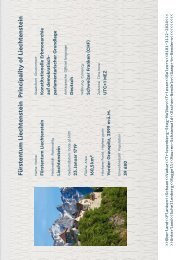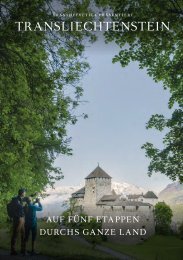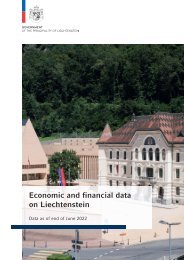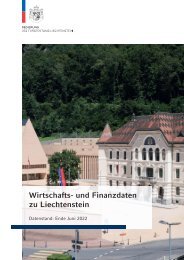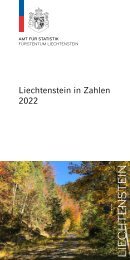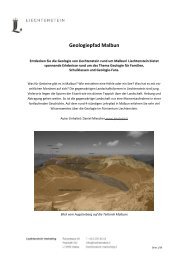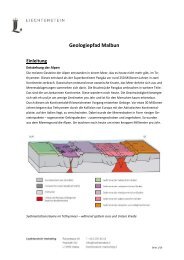Princely Hikes in Liechtenstein
Which country in Europe has the densest network of hiking trails? It’s not the alpine classics of Switzerland or Austria, but in fact the small Principality of Liechtenstein nestling between those two countries. More than 400 kilometres of well-maintained and clearly signposted trails and majestic mountains up to 2600 metres above sea level attract walkers and hikers to Liechtenstein.
Which country in Europe has the densest network of hiking trails? It’s not the alpine classics of Switzerland or Austria, but in fact the small Principality of Liechtenstein nestling between those two countries. More than 400 kilometres of well-maintained and clearly signposted trails and majestic mountains up to 2600 metres above sea level attract walkers and hikers to Liechtenstein.
You also want an ePaper? Increase the reach of your titles
YUMPU automatically turns print PDFs into web optimized ePapers that Google loves.
8 → tourismus.li/hik<strong>in</strong>g<br />
Emergency numbers<br />
Emergency 112<br />
Air rescue (REGA) 1414<br />
Ambulance 144<br />
Police 117<br />
Signpost<strong>in</strong>g of trails<br />
Walk<strong>in</strong>g and hik<strong>in</strong>g trails <strong>in</strong> Liechtenste<strong>in</strong> are marked with coloured<br />
signposts, which usually <strong>in</strong>clude location <strong>in</strong>formation, the route dest<strong>in</strong>ation<br />
and stop-off po<strong>in</strong>ts along the way. Some have details of walk<strong>in</strong>g times;<br />
these are based on an average walk<strong>in</strong>g speed of 4.2 kilometres per hour on<br />
flat, easy paths. Additional time required as a result of climbs or difficult<br />
terra<strong>in</strong> is taken <strong>in</strong>to account <strong>in</strong> the walk<strong>in</strong>g times.<br />
WALKING TRAIL<br />
Walk<strong>in</strong>g trail<br />
Walk<strong>in</strong>g trails have no specific difficulties, avoid tarmac and concrete<br />
surfaces wherever possible, and stay away from public roads. Steep climbs<br />
are overcome us<strong>in</strong>g levels, while any exposed sections are secured with<br />
steel ropes, handholds, etc. Flow<strong>in</strong>g water is crossed us<strong>in</strong>g footbridges.<br />
HIKING TRAIL<br />
Hik<strong>in</strong>g trail<br />
Hik<strong>in</strong>g trails are paths that <strong>in</strong>clude sections of rough terra<strong>in</strong>. They are<br />
predom<strong>in</strong>antly steep and narrow and are exposed <strong>in</strong> places. Particularly<br />
difficult sections are secured us<strong>in</strong>g ropes, cha<strong>in</strong>s, footholds, handrails,<br />
etc. – safety equipment typical of via ferrata climb<strong>in</strong>g routes. Flow<strong>in</strong>g water<br />
may have to be crossed on stepp<strong>in</strong>g stones or waded through.<br />
ALPINE TRAIL<br />
Alp<strong>in</strong>e trail<br />
Alp<strong>in</strong>e trails are challeng<strong>in</strong>g mounta<strong>in</strong> paths. They lead <strong>in</strong> part through<br />
unmarked terra<strong>in</strong> or rocky terra<strong>in</strong> with short climb<strong>in</strong>g sections. Walkers and<br />
hikers embark<strong>in</strong>g on alp<strong>in</strong>e trails must be sure-footed, have a good head<br />
for heights and be <strong>in</strong> very good physical condition. Rope and pickaxe skills<br />
are essential.




